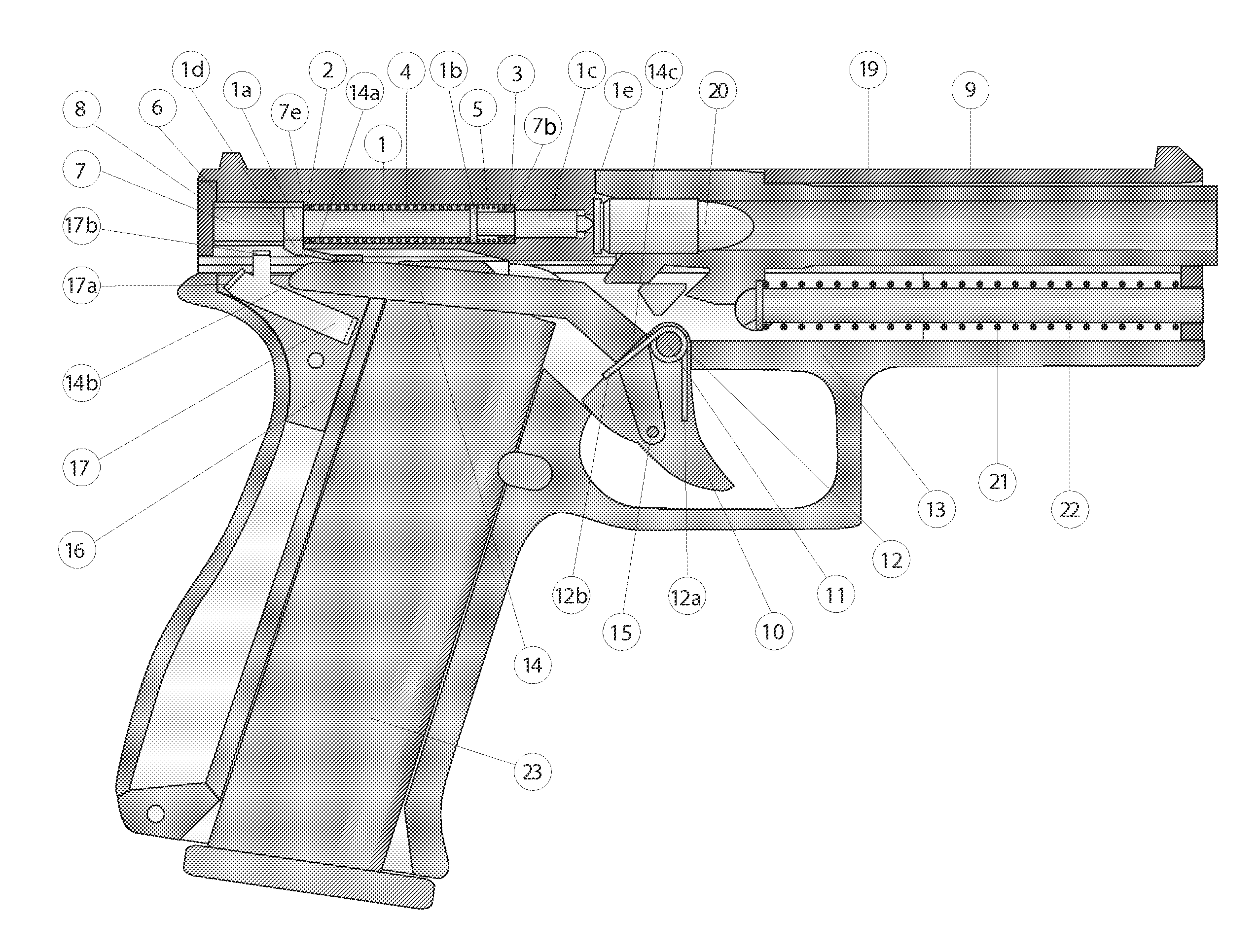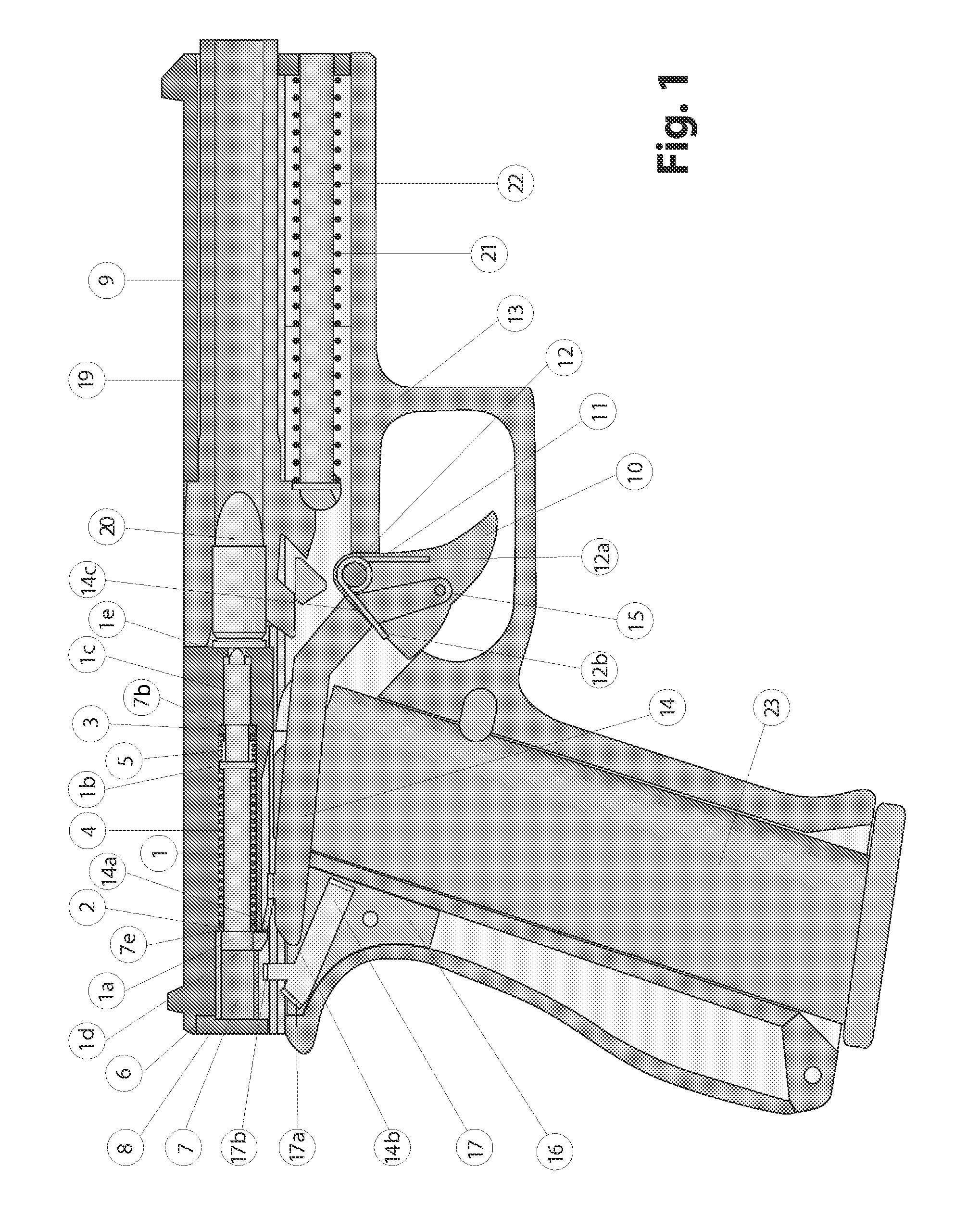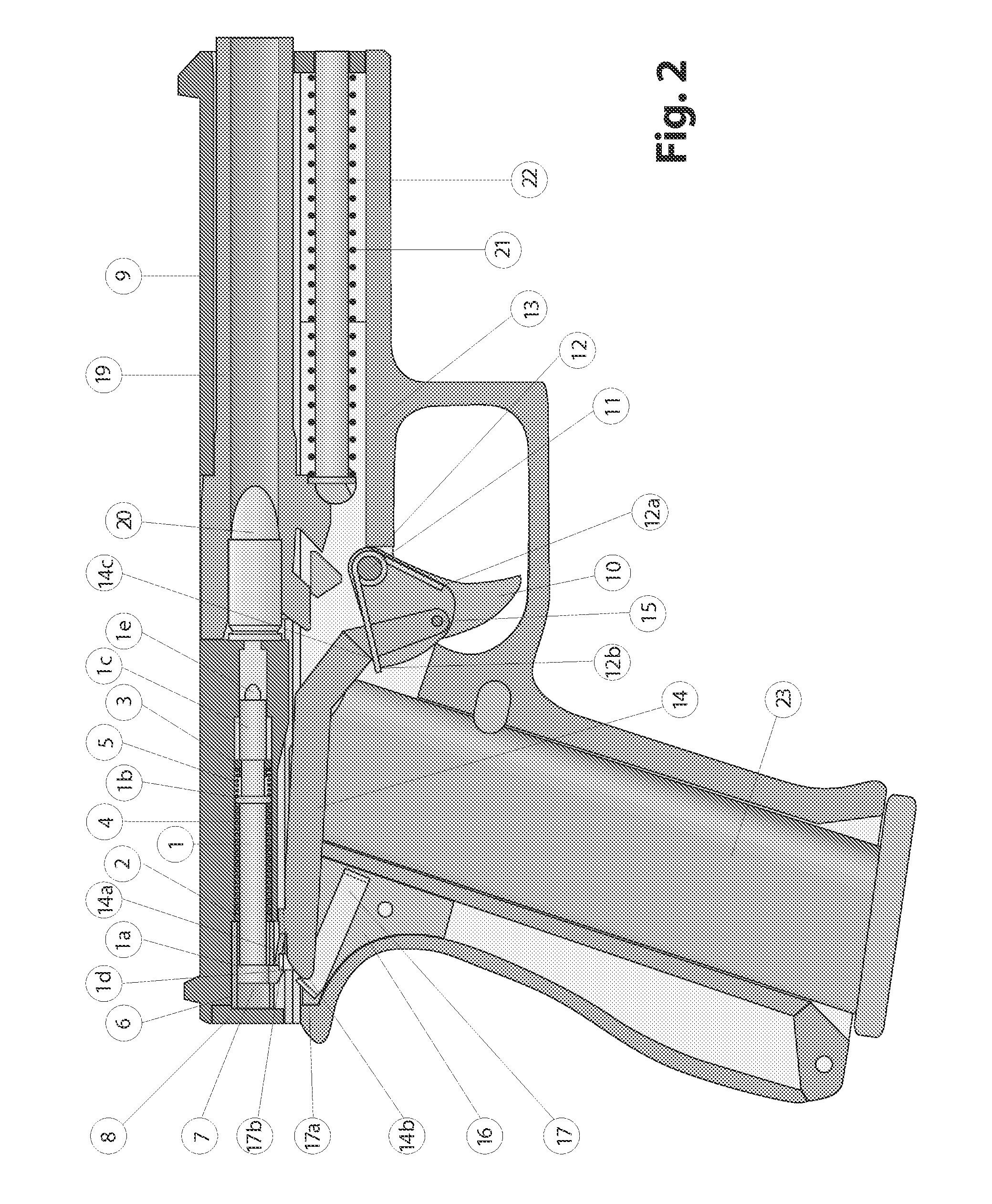Double action short reset trigger system
a trigger system and short-action technology, applied in the field of double-action short-action reset striker-trigger system, can solve the problems of cocking the hammer, longer time needed for the first shot, and risk of accidental discharg
- Summary
- Abstract
- Description
- Claims
- Application Information
AI Technical Summary
Benefits of technology
Problems solved by technology
Method used
Image
Examples
Embodiment Construction
[0046]FIG. 1 shows a vertical cross section of an automatic firearm—a handgun, in a stationary position of the mechanism, which has a built-in double-action trigger mechanism with short reset, according to the subject of the current invention. The double-action trigger mechanism with short rest consists of striker (1) with three enlargements—rear (1a), middle (1b), and front (1c). The front (1c) and rear (1a) enlargements are positioned at the two ends of the striker (1). The middle enlargement (1b) is positioned closer to the front enlargement (1c). There is a prong (1d) formed on the bottom end of the rear enlargement (1a) to connect the striker to the trigger mechanism. The prong (1d) has a flat frontal face, perpendicular to the axis of the striker (1), and a rear face inclined to the axis of the striker (1). In the front part of the striker (1), centered on the front enlargement, is formed a pointed tip (1e). Between the rear enlargement (1a) and the front enlargement (1c) ther...
PUM
 Login to View More
Login to View More Abstract
Description
Claims
Application Information
 Login to View More
Login to View More - R&D
- Intellectual Property
- Life Sciences
- Materials
- Tech Scout
- Unparalleled Data Quality
- Higher Quality Content
- 60% Fewer Hallucinations
Browse by: Latest US Patents, China's latest patents, Technical Efficacy Thesaurus, Application Domain, Technology Topic, Popular Technical Reports.
© 2025 PatSnap. All rights reserved.Legal|Privacy policy|Modern Slavery Act Transparency Statement|Sitemap|About US| Contact US: help@patsnap.com



